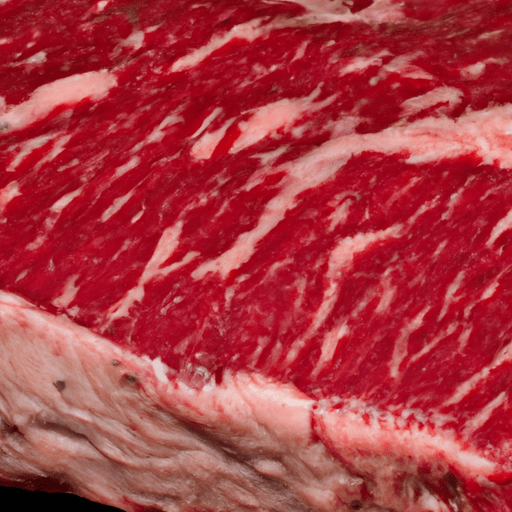Buffalo Sirloin: A Savory Delight
When it comes to unique and flavorful meats, buffalo sirloin stands out as a prime choice. This premium cut offers a delicious dining experience that will leave your taste buds craving for more. In this blog post, we will delve into the world of buffalo sirloin, exploring its taste, common uses in cooking, nutritional value, and some interesting historical facts that will satisfy your curiosity.
Taste and Texture
Buffalo sirloin is celebrated for its distinct and robust flavor. It boasts a rich, slightly sweet taste that is often compared to grass-fed beef. The meat is tender and succulent, with a fine texture that lends itself well to various cooking techniques. Whether you prefer a juicy medium-rare steak or a slow-cooked, melt-in-your-mouth roast, buffalo sirloin delivers a memorable culinary experience.
Cooking Methods and Uses
Buffalo sirloin offers versatility in cooking, making it suitable for a wide range of recipes. Here are some popular cooking methods and uses:
Grilling: The exceptional flavor of buffalo sirloin truly shines when it is grilled to perfection. The high heat of the grill helps to seal in the meat’s natural juices, resulting in a tender and flavorful steak that is hard to resist.
Roasting: For a more elegant preparation, roasting buffalo sirloin in the oven produces a succulent centerpiece for any special occasion. Seasoned with herbs, spices, and a touch of olive oil, the meat becomes tender, juicy, and full of flavor.
Stir-frying: Cut into thin strips, buffalo sirloin is an excellent choice for stir-fry dishes. Quick and easy to cook, it pairs well with a variety of vegetables and sauces, making for a delicious and wholesome meal.
Ground Meat: Buffalo sirloin can also be ground and used in recipes like burgers, meatballs, or chili. Its distinctive taste adds a unique twist to traditional dishes, taking them to new heights of flavor.
Nutritional Value
Apart from its delectable taste, buffalo sirloin also offers remarkable nutritional benefits. In comparison to beef, it is significantly lower in fat and calories, making it a lean and healthy choice. Buffalo sirloin is a great source of protein, iron, and various essential vitamins and minerals. By incorporating this lean meat into your diet, you can enjoy a nutritious and satisfying meal without compromising on taste.
Historical Significance and Interesting Facts
Buffalo meat has a deep-rooted history in the United States. For centuries, Native American tribes relied on the buffalo as a primary food source, using every part of the animal for sustenance. In recent years, the popularity of buffalo meat has surged due to its flavorful profile and nutritional benefits. As a result, buffalo farming and sustainable practices have gained momentum, ensuring the preservation of this iconic animal.
One fascinating fact about buffalo meat is that it contains more omega-3 fatty acids than conventional beef. These healthy fats contribute to heart health and are known for their anti-inflammatory properties. So not only does buffalo sirloin tantalize your taste buds, but it also offers a range of health benefits.
Bring the Flavors of Buffalo Sirloin to Your Table
In conclusion, buffalo sirloin is a culinary gem that brings a unique taste and nutritional profile to your dining experience. Its savory flavor and tender texture make it a delight to cook with, whether grilling, roasting, stir-frying, or using it as ground meat. As you indulge in the distinct taste of buffalo sirloin, you can appreciate its historical importance and the sustainable practices that ensure its continued availability.
So go ahead, venture into the world of buffalo sirloin, and elevate your cooking to new heights with this exceptional meat. Your taste buds will thank you, and your dining companions will be in awe of your culinary prowess. Enjoy the flavors and feast on the history of buffalo sirloin!
Buffalo Sirloin
Origin: Buffalo sirloin, also known as bison sirloin, comes from bison, which are large, herbivorous mammals native to North America.
Common Uses: Buffalo sirloin is a lean and flavorful cut of meat that is commonly used in various dishes. It can be grilled, roasted, or pan-seared and is often served as a steak or used in stews, stir-fries, and burgers.
Nutritional Benefits: Buffalo sirloin is known for its nutritional benefits. It is rich in protein and contains essential amino acids necessary for muscle growth and repair. It also provides various vitamins and minerals, including iron, zinc, and vitamin B12.
Unique Properties: Buffalo meat, including the sirloin, is generally leaner than beef, making it a healthier alternative. It has a richer flavor and slightly sweeter taste compared to beef. The texture of buffalo sirloin is tender and can be described as similar to a well-marbled beef steak.
Historical Significance: Bison have played a significant role in the history and culture of North America. They have long been a staple food source for indigenous peoples and were hunted by Native Americans for centuries. Bison were also integral to the survival of early European explorers and settlers in North America. Today, bison are considered an iconic symbol of the American West.




Use the share button below if you liked it.
It makes me smile, when I see it.